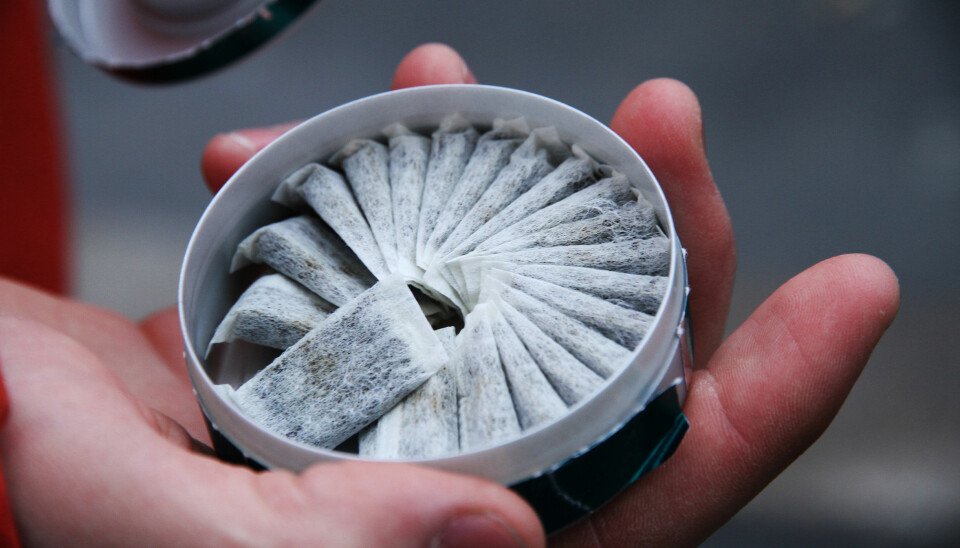Detoxify Your Life:
Break Free from Smokeless Tobacco
Smokeless tobacco products like chewing tobacco, snuff, and snus are alternative forms of consuming nicotine for individuals who can't or prefer to avoid smoking cigarettes. These products offer convenience and discretion, especially when smoking is prohibited. Conversely, this could lead to more frequent and prolonged tobacco use, resulting in higher nicotine tolerance and dependency among users, ultimately perpetuating a cycle of addiction.
Unfortunately, smokeless tobacco is often perceived as a safer alternative to smoking cigarettes because it doesn't involve inhaling smoke and the underestimation of harmful chemicals; however, it poses serious health risks, including mouth, throat, esophagus, and pancreas cancer, cardiovascular / heart disease, and other oral health problems. While the method of nicotine consumption differs from smoking, the dangers associated with smokeless tobacco are significant and should not be underestimated.
Understanding the risks and realities of smokeless tobacco is crucial. Dispelling myths and providing accurate information can empower individuals to make healthier choices. Whether you currently use smokeless tobacco or are considering quitting, Freedom Laser is dedicated to equipping you with the knowledge you need and guiding you toward better health and well-being.
What is Smokeless Tobacco?
Smokeless tobacco refers to a variety of tobacco products that are consumed without burning. The amount of nicotine delivered varies by product type, brand, and usage duration. Some products deliver nicotine levels equivalent to or even higher than those in cigarettes, making them highly addictive. Unlike cigarettes or cigars, these products are intended to be used orally or nasally. Common types of smokeless tobacco include:
Chewing Tobacco: This type is available in loose leaf, plug, or twist form. Users typically place a wad of tobacco between their cheek and gum and chew or suck on it to release nicotine and flavors, occasionally spitting out the juices
Snuff: Finely ground or shredded, dry or moist tobacco. Users place a pinch between their lower lip and gum or inhale it through the nose.
Snus: A moist powder tobacco product, often sold in small pouches, similar to tea bags. Users place the pouch under their upper lip. Unlike chewing tobacco and snuff, snus users typically do not spit out excess saliva.
Smokeless but Still Dangerous
High Nicotine Content and Addiction: Over time, users may need more of the product to achieve the same effects, leading to higher consumption and developing a strong addiction.
Oral Health Risks: Regular use can lead to severe oral health issues, including gum disease, tooth decay, and mouth sores. Prolonged use increases the risk of developing leukoplakia, a precancerous condition.
Cancer Risks: Increased risk of mouth, throat, esophagus, and pancreas cancers because of carcinogenic substances.
Cardiovascular Issues: Nicotine and other chemicals can lead to heart disease and high blood pressure, posing serious risks to cardiovascular health.
Reproductive and Developmental Issues: Pregnant women are at higher risk of preterm births, low birth weight, and stillbirths. Nicotine exposure during pregnancy can lead to developmental issues and health problems in children.
Mental Health Impact: Some users believe nicotine helps manage stress, but it can actually exacerbate anxiety and stress levels. The cyclic nature of nicotine highs and lows can contribute to depressive symptoms.
Other Health Impacts: Users may also face digestive issues and complications in wound healing, among other health problems associated with smokeless tobacco use.
The Harmful Ingredients in Smokeless Tobacco
Acetaldehyde: a toxic chemical that can damage cells and cause cancer.
Arsenic: a toxic element that can cause various cancers and skin lesions
Benzopyrene: a chemical that can cause lung cancer and other respiratory diseases
Cadmium: a cancer-causing metal used in batteries, linked to lung and kidney disease
Cyanide: a deadly poison that interferes with the body's ability to use oxygen
Formaldehyde: known carcinogen that damages tissues and causes respiratory issues
Hydrazine: highly toxic and can cause damage to the liver and central nervous system
Lead: a toxic metal that can damage the nervous system and kidneys
Mercury: a toxic metal that can impair brain function and damage the nervous system
Nicotine: A highly addictive substance that increases cardiovascular disease risks
Nitrosamines: Potent cancer-causing chemicals associated with tobacco products
Polonium-210: radioactive element that causes cancer and other serious health issues
Ready to Quit Smokeless Tobacco?
Uncover the Truth About Other Nicotine Delivery Devices








